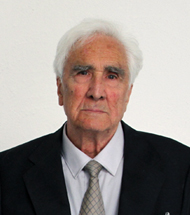Leonardo da Vinci used music theory to create perspective in 'The Last Supper', ICS expert proposes
On the occasion of the 500th anniversary of the death of the artist and inventor, Joaquín Saura gave a lecture lecture in which he assured that "music invades his work".

PHOTO: Natalia Rouzaut
Leonardo da Vinci used music theory to create perspective in the painting 'The Last Supper', says Joaquín Saura, an expert on the artist and inventor and on music theory. The specialist exposed his theory in a lecture of the University of Navarre on the occasion of the 500th anniversary of the death of the genius, invited by the project ' 'Creativity and Cultural Heritage' of the Institute for Culture and Society (ICS).
"Music invades his work," he said, since, with it, he creates the geometric shapes that compose, delimit and structure the mural.
At that time, he noted, the musical system was often used as a numerical and geometric system. Da Vinci, who was also a musician, used the musical scale and its intervals (octaves) to create measurements. If sound is a vibration, the grade do is the vibration of the whole object, a complete unit. The sharper the grade, the smaller the vibrating space (a half, an octave...).
The artist transfers this idea to the painting: the figures get smaller in scale, as they move away. Thus, the elements in the first line would be a C, they would look life-size, and the following elements diminish to a half, a third, a sixth... Creating the illusion of perspective.
"Leonardo calculates that, if the ceiling and walls where it is exposed are a C - a complete grade - an element at a certain distance will be a sun and will have a size of a fifth," he said.
The mysteries and controversies of the muralFrom agreement with Rafael Zafra, researcher of the ICS and organizer of the lecture, this "novel theory" serves to reveal unknown aspects of 'The Last Supper'. An example would be the controversial door that invades the painting and cuts the feet of Jesus.
Following this theory, it can be seen how the design of the work is "geometrically square and divided into three thirds," Saura said. Thus, he considers that the author knew the future layout of a door and simply removed the upper third and raised the image, leaving the door to simply show through and not invade the painting. The da Vinci expert is supported by the fact that, during the restoration of the mural, lines were found in the second third indicating the old layout of the painting.
As part of the tribute to Leonardo on his 500th anniversary, the fresco has remained projected in one of the naves of the University of Navarra's Central Building , with a layout similar to that of the refectory of the former Dominican convent of Santa Maria delle Grazie in Milan, where the mural is located.
Thus, in the words of Rafael Zafra, "this tribute combines scientific and academic rigor with performative and artistic creativity, so characteristic of da Vinci himself".
